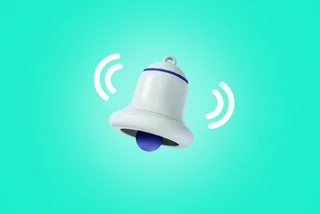When the new government takes power in the Czech Republic next week, it will be the first time in the country’s post-Velvet Revolution history that there are no members of the Communist Party in either the lower or upper houses of Parliament. Arguably, this is the end of a process that began with the first legally approved anti-government rally in Prague’s Žižkov district 33 years ago.
The Communist Party of Bohemia and Moravia (KSČM) failed to cross the 5 percent vote threshold in the Oct. 8–9, 2021, general elections for the Chamber of Deputies. As a result, they received no seats in the new allotment of mandates. They had already lost their last seat in the Senate in 2018.
The new shape of the lower house also means there will be a new prime minister. Outgoing PM Andrej Babiš had been a member of the Communist Party of Slovakia in the 1980s, although he says he regrets this. Incoming Prime Minister Petr Fiala was a dissident in the 1980s involved in an underground education group and samizdat publishing.

The fall of communism has been a long process, and one of the key moments was 33 years ago today, on Dec. 10, 1988, almost a full year before the Velvet Revolution. The first permitted anti-government demonstration was held at Škroupovo náměstí, about a block from the Žižkov TV Tower, which was at the time not yet finished. Václav Havel, then still a dissident playwright, was among the main speakers.
Prague 3 Mayor Jiří Ptáček recalled the event on Facebook. “Basically, the only anti-regime demonstration allowed during the communist era in our country was in Škroupovo náměstí on Saturday, Dec. 10, 1988. The original plan to obtain a permit for Václavák did not work out. It was banned under the pretext of protecting monuments. The organizers tried Prague 3 and obtained permission from the local ONV,” he said.
Václavák is the popular slang name for Wenceslas Square. The ONV is the “okresní národní výbor,” the district oversight committee of the national communist party.
“By the way, my parents took me here 33 years ago. It was the first time I had been to a demonstration,” Ptáček said. He would have been 9 years old at the time.
The official reason for the rally was the 40th anniversary of the adoption of the Universal Declaration of Human Rights by the UN General Assembly. While that sounds innocent enough, the permit was requested by five civic groups that had been a collective thorn in the side of the authorities: Charter 77, the Committee for the Defense of the Unjustly Prosecuted, Czech Children, the Civil Liberties Movement, and the Independent Peace Association.

Why the Prague 3 ONV gave permission for a rally of well-known government opponents was a mystery then, and remains so. A year later, in the run-up to the Velvet Revolution, all similar permit requests were denied.
The application, though, coincided with a planned Dec. 8–9 visit of French President François Mitterrand. Perhaps the party wanted to create the illusion at least that it was tolerant of opposition, and not as harsh as international critics made out. Mitterrand’s visit had brought some international press to the country.

Škroupovo náměstí is a small location, more of a glorified traffic circle than a city square. About 3,000 people attended the rally, which actually made the area rather crowded. The central part is flowerbed, and people were not permitted on the grass.
There was virtually no way to publicize the event, which had been organized rather quickly since the permit was granted only at the last minute. Some flyers were printed in green ink with a UN logo. These had limited distribution by hand. Many people heard about it only after was over. Some who had heard didn’t attend because they didn’t believe the rumor, and others thought it was a trap.

The rally began at 3 pm with the Czechoslovak anthem and lasted less than two hours. Havel called for the release of specific political prisoners and an end to one-party rule. Some 700 people signed a petition.
Security forces were present and monitored the event, but it ended quietly, without a clash with the police. A blue and white plaque on a building and a larger information sign in the small park commemorate the event.

A day earlier, French President Mitterrand met at the French Embassy in Prague with Havel and seven other dissidents from the Charter 77 movement. At the breakfast, Havel and his companions reportedly told Mitterrand that while there were some reforms in the Soviet Union under then-president Mikhail Gorbachev, the same attitude was was not yet present in Prague.
The New York Times reported that when Mitterrand asked about political conditions in the Eastern bloc, Charter 77 signer Miloš Hájek, who attended the breakfast, replied that “a coalition of immobility appeared” to be forming in Czechoslovakia, East Germany, and Romania, standing opposed to Gorbachev’s changes.
“I said there appeared to be a triangle forming between East Berlin, Prague, and Bucharest, even though not all the angles of the triangle are equally sharp,” Hájek said, according to the 1988 NYT story.

As for the final end of communist presence in the Parliament, that seems to be largely based on support simply dying off, quite literally. The party has long been dominated by pensioners who trace their membership back to the original communist party from before 1989, and that group simply grows smaller every year.
Voters in their early 30s and younger have no first-hand experience with life under communism and apparently no desire to find out. The KSČM’s message of creating closer ties to China and Russia, as well as opposing both European Union and NATO membership, simply does not connect with the generations that have grown up with the Czech Republic as part of a globalized world, according to analysts.
After the loss of lower house seats in the general election, KSČM head Vojtěch Filip resigned from the post he held since 2005. The new party head, Kateřina Konečná, says she hopes to rebuild the party by connecting with younger voters.












 Reading time: 5 minutes
Reading time: 5 minutes 































